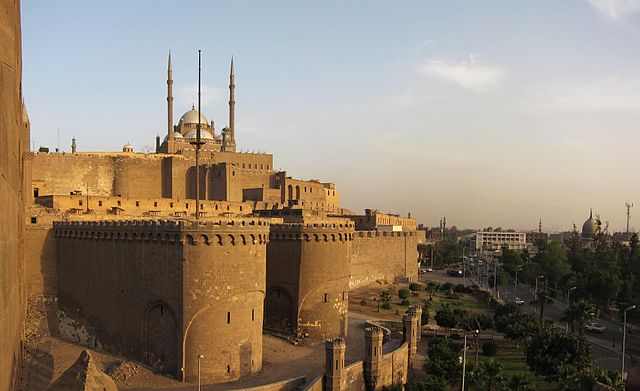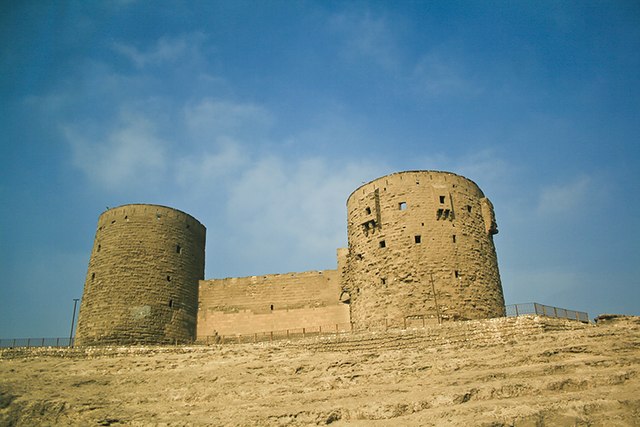Al-Rifa'i Mosque is located in Citadel Square, adjacent to the Cairo Citadel. Its name is derived from the Ali Abu Shubbak who is buried in the mosque. Now, it is also the royal mausoleum of Muhammad Ali's family. The building is located opposite the Mosque-Madrassa of Sultan Hassan, which dates from around 1361, and was architecturally conceived as a complement to the older structure as part of a vast campaign by the 19th century rulers of Egypt to both associate themselves with the perceived glory of earlier periods in Egypt's Islamic history and modernize the city.
View of the mosque from Cairo Citadel, showing the domes and minaret
The wooden enclosure over the grave of Ali Abu Shubbak al-Rifa'i within the mosque.
The Citadel of Cairo or Citadel of Saladin is a medieval Islamic-era fortification in Cairo, Egypt, built by Salah ad-Din (Saladin) and further developed by subsequent Egyptian rulers. It was the seat of government in Egypt and the residence of its rulers for nearly 700 years from the 13th century until the construction of Abdeen Palace in the 19th century. Its location on a promontory of the Mokattam hills near the center of Cairo commands a strategic position overlooking the city and dominating its skyline. When it was constructed it was among the most impressive and ambitious military fortification projects of its time. It is now a preserved historic site, including mosques and museums.
View of the Citadel, with the Ottoman-era gate of Bab al-'Azab, and the 19th-century Muhammad Ali Mosque.
View of the Citadel near the visitor entrance today. The minarets of the 14th-century Al-Nasir Muhammad Mosque can be seen in the background.
The two easternmost towers, fortified by al-Kamil in 1207: the Burj al-Ramla and the Burj al-Hadid
Chamber inside the Burj al-Ramla






